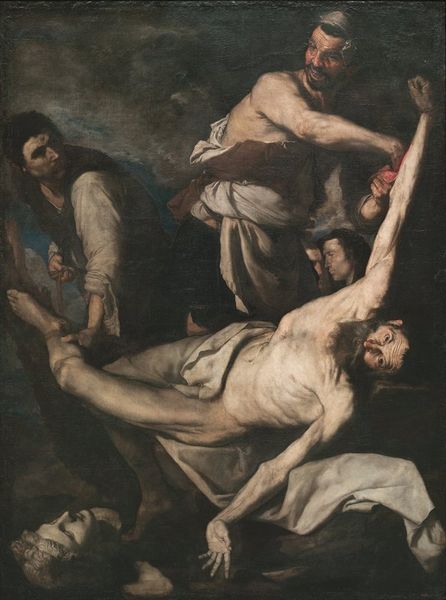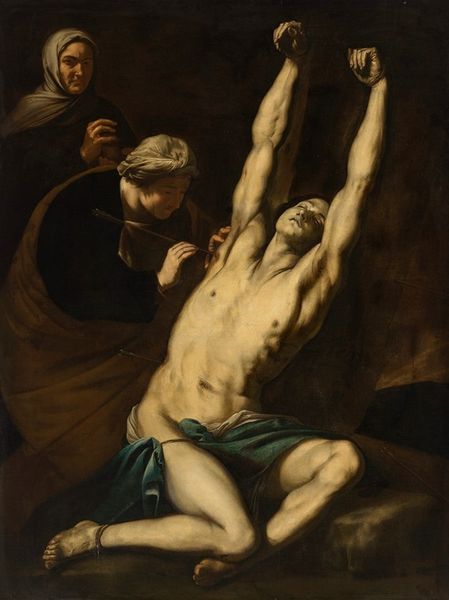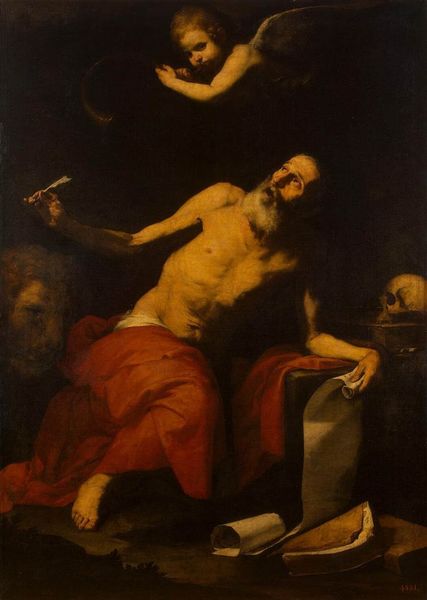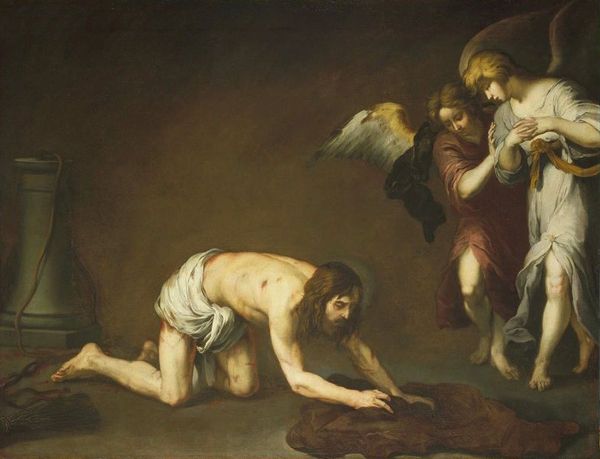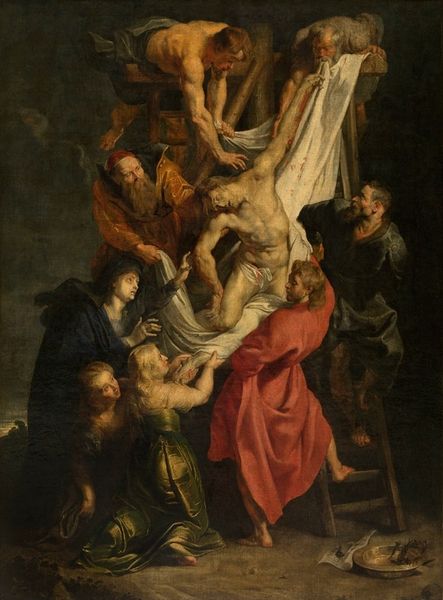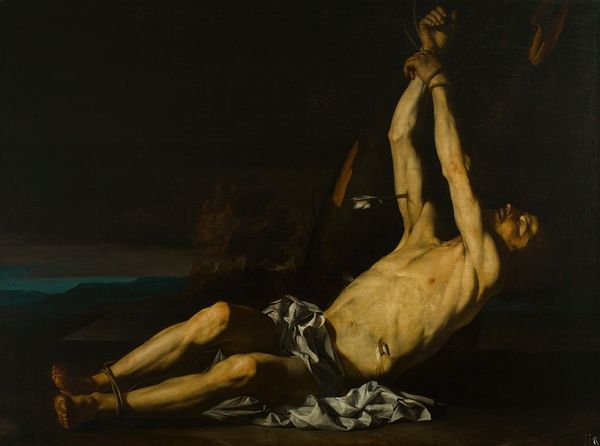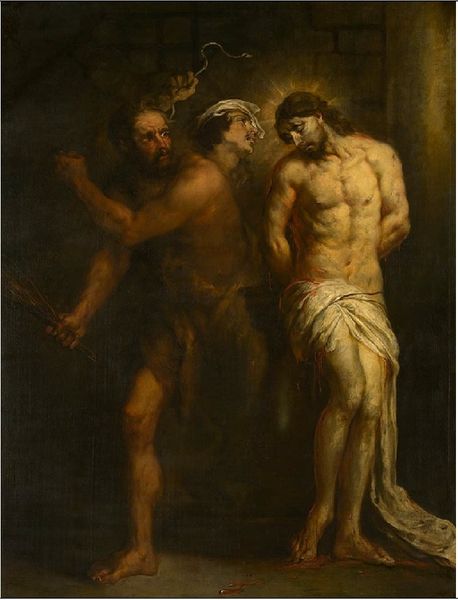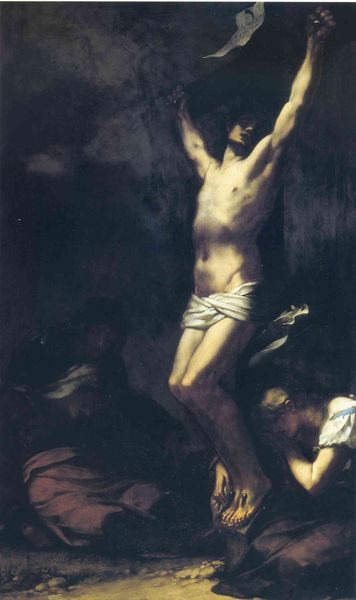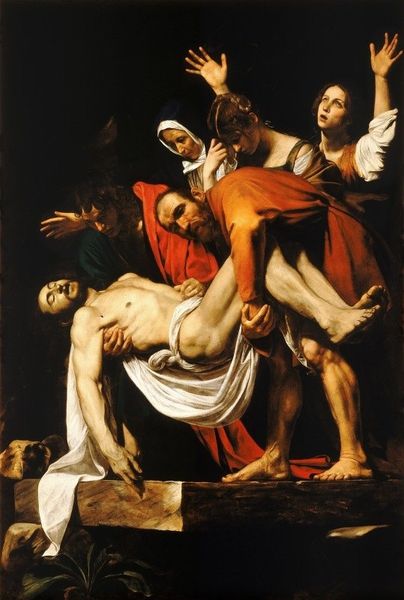
oil-paint
#
baroque
#
oil-paint
#
figuration
#
oil painting
#
history-painting
#
italian-renaissance
Copyright: Public Domain: Artvee
Editor: Luca Giordano's "The Descent from the Cross," painted around 1659 in oil, is striking. The intense darkness emphasizes the body being lowered; it feels so heavy and vulnerable. What do you see when you look at this painting? Curator: The darkness you mention is key. In the context of cultural memory, darkness signifies not only death but also the unknown, a space of potential rebirth. Consider the figures supporting Christ—their partially obscured faces speak to the mixed emotions: grief, respect, perhaps even fear. They represent us, the viewers, grappling with the implications of this moment. Editor: I see the obvious religious symbolism, but is there something more hidden? Curator: Note how Christ’s body, bathed in light, is the focal point. It's an archetype of sacrifice, deeply ingrained in Western consciousness. The cloth, the hands carefully supporting him – these aren’t just about the physical act of descent. They are about tenderness, compassion, a plea for understanding, all potent symbols within the Christian narrative, but also universal ones. The angle of the body too… Editor: How so? Curator: It's an echo of deposition scenes throughout art history, so a constant cultural memory. Each generation interprets it anew, but the core meaning of loss and redemption endures. The history of deposition scenes speaks to the ways humanity continues to process trauma and hope. What do you make of the muted color palette, beyond the necessity? Editor: That’s interesting, that you mention trauma! I can see how such memories are embedded in images and perhaps re-experienced. I was focused on the shadows. Thanks for clarifying this work's depth for me! Curator: And thank you for your insightful questions! It’s rewarding to see how these symbols still resonate.
Comments
No comments
Be the first to comment and join the conversation on the ultimate creative platform.
